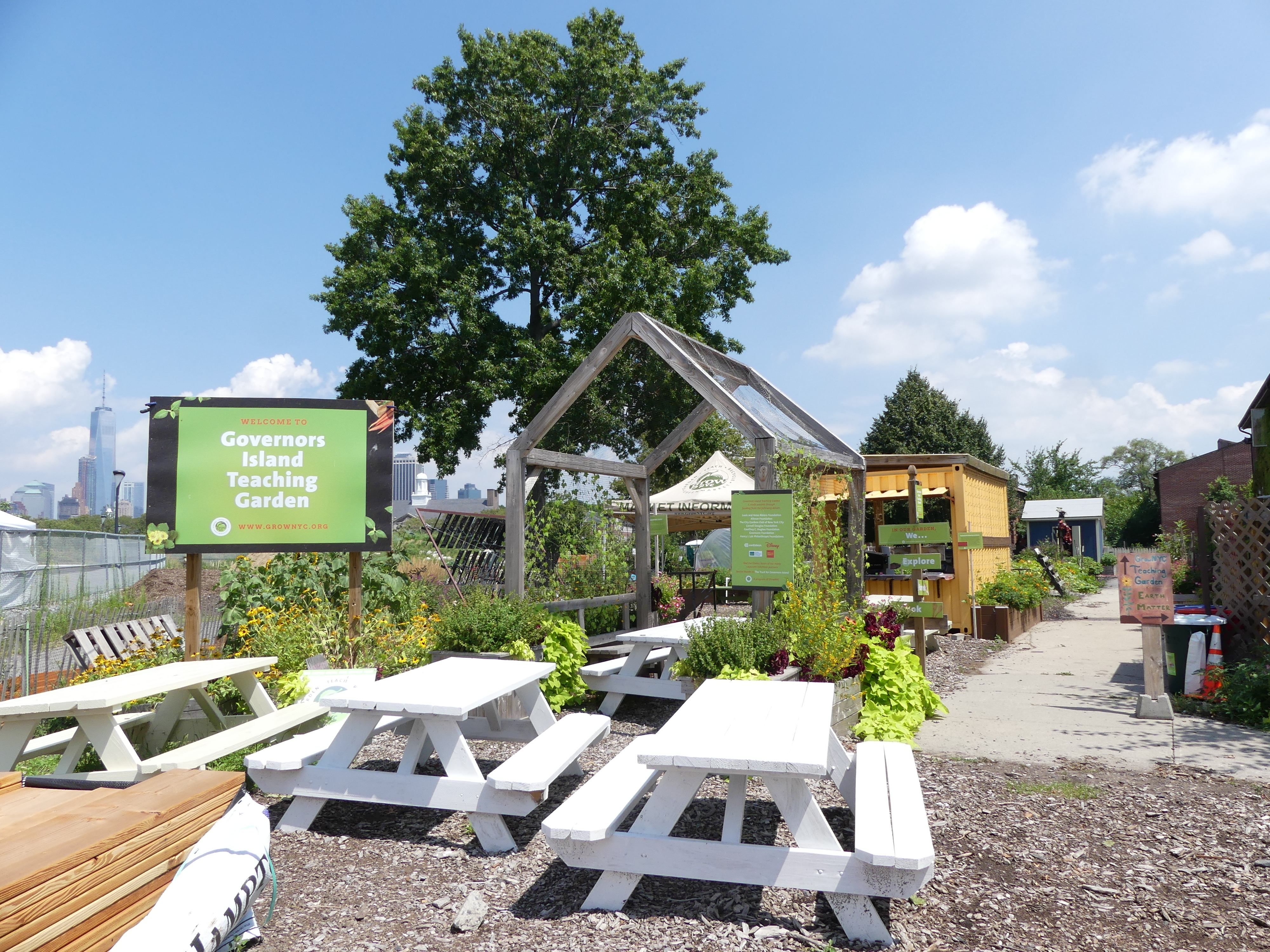island farm oasis in the middle of NYC

Here's an island you'd be down-right lucky to get ship-wrecked on! Greenhorns correspondent Julia Caruso spoke recently with Gabrielle Hayes, the Farm Coordinator at GrowNYC’s urban educational farm, Governors Island Teaching Garden, about the rewards and challenges of educational urban farming and-- an idea we especially love-- the need for and incredible potential of fostering active relationships between urban and rural farmers.
Farming and Teaching Against the New York City Skyline
A Walk Through the Governor's Island Teaching Garden
by Julia Caruso
GrowNYC is an environmental organization most well-known for operating Greenmarket, 52 farmers' markets around the city, also works actively throughout the city to build community and school garden where they promote hands-on horticulture education for all ages. One such garden, the Governors Island Teaching Garden, is a working urban farm in its fourth year as part of the GrowNYC organization. In a single growing season, April to October, with a half-acre of land they grow 100+ crops and teach 5,000 students between grades K-12 the process and importance of growing and consuming whole foods.
The mission of Teaching Garden is to teach the value of healthy eating, how to grow and use productive green spaces to be better stewards of the environment, and to make sure students always leaving having had a positive experience with nature.
“Urbanization is making us all extremely disconnected from what we eat,” she said, “we need more educational farms.”
Though visitors are at the mercy of the hourly Governors Island ferry schedule, the planning and traveling is worth it. The reward for the journey can be immediate; some students exclaim that the ferry is their first time on a boat! Taking the ferry and walking around the island gives visitor a fresh perspective of the Concrete Jungle, a closer look at the Statue of Liberty, and a chance to experience food from seed to mouth.

Gabrielle chose to farm in an urban environment instead of rural because she loves the opportunity to interact and educate the next generation. (The balance between living in a city and escaping it 5x weekly on the island helps to). She is able to create lessons that vary from healthy eating and growing crops, to food justice and ethnobotany, depending on the grade level of the kids.
The Teaching Garden is a wonderful resource for public school children; especially those underprivileged and undernourished as it can open their eyes to food beyond processed and packaged calories. The biggest problem, Gabrielle says, is that with a staff of only two full-time and three seasonal part-time employees, they can only accommodate 100 students a day, three days a week. Many teachers ask to bring their students again, but Teaching Garden cannot accommodate repeat visitors. This is where you lovely rural farmers come in!
Gabrielle would love to see more partnerships between rural and urban farms. “Urbanization is making us all extremely disconnected from what we eat,” she said, “we need more educational farms.”
More and more people do not know where their food comes from. Seeing a “real life farm,” as she put it, might further inspire children to care more about the environment and eating whole, nourishing foods. A school could explore an urban farm and then travel out of the city to see how a large acreage farm operates and how the principals of small urban farming translate. “Urban farms and farmers and rural farms and farmers are very disconnected,” Gabrielle lamented. She believes that the more kids can be exposed to farming, the more they’ll want to be a part of it.
In a nonchalant manner Gabrielle concluded our discussion, “I think it’s [Teaching Garden] the coolest place in New York City.”


